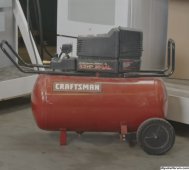ksmithaz1
Solar / EV Junkie
An interlock kit is fine enough as long as the inverter is providing enough power for all the loads. Otherwise you would have to power off some of your circuits to get the load down. I agree - a better idea is to use a transfer switch to be able to switch specific circuits between grid power and inverter power at will.
I would like to do a transfer switch but haven't gotten that far yet. In the meantime I'm using an off-grid (mostly) panel to power specific things, but with an interlock kit to be able to switch all the loads in the panel from the inverter to grid power for those times I need to take down my off-grid system for changes, maintenance, etc.
Just so we are clear, perhaps I mis-understand . . . We drop a 30A breaker or something off the main panel into the grid lugs on our inverter which are designed to take over, if the inverter can't cut it, and then we are going to come off the load lugs from this same inverter and wire back to the main panel with an interlock that cuts off the grid and you think that's "fine"? At best you just created a potential strangely looped path. At worst you cross phases on the inverter and short the mess.
For starters I think you would need a double gang interlock one for the feed in / feed out from the inverter, and another for the inverter/grid, that are all tied. I foresee releasing the "Magic Smoke" if one is not extremely careful. Making seriosly complicated cabling & switching sounds like a recipe for disaster to me. Make sure all your breakers are quality units and working properly. You will also want to make sure you keep your L1/L2 wires properly banded or color coded so you don't get anything crossed, or you could create a phasing issue.
So you CAN do it, but I wouldn't if you are using grid pass-thru on the inverter. If not I'd run a separate transfer switch for the critical loads panel, one feed primary from the inverter, secondary from the grid, and another transfer switch at the main panel primary from the grid, secondary from the inverter. At which point you might ask, will the inverter actually handle both by itself? At which point you might ask, then why not just have a single transfer switch and run everything out of the main panel? Or peel the main panel feed directly to the inverter.
What am I missing?



